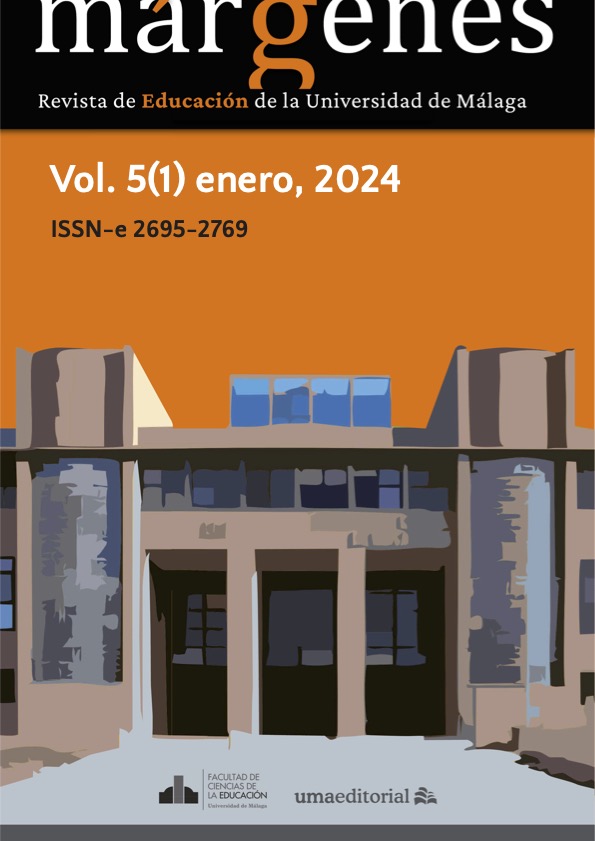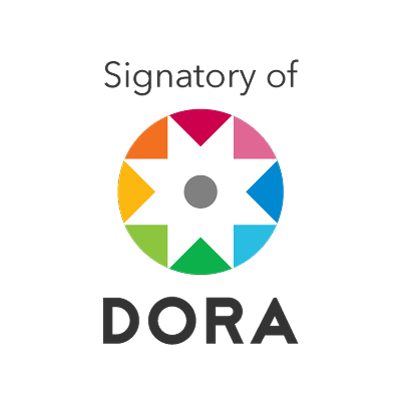Creating learning networks: An intergenerational experience in primary education
DOI:
https://doi.org/10.24310/mar.5.1.2024.15230Keywords:
intergenerational, curriculum, students, social cohesionAbstract
Today's society is in the midst of a number of unprecedented changes. Among them are the longevity and mobility of people. In other words, we are facing societies with a larger older population and greater cultural diversity. In this context, the school is an excellent environment to promote social and intercultural cohesion and to create learning networks beyond the curricular content. This article presents the evaluation of an intergenerational experience based on reading support carried out with primary school pupils. Based on a qualitative methodology, on the one hand, drawings and photographs related to the experience were analysed and, on the other hand, five discussion groups were carried out. The results underline the potential of the methodology used to enrich the curriculum. It also highlights the impact that this type of experience has on the individual, community, school and social level, promoting interculturality and lifelong learning.
Downloads
Metrics
Publication Facts
Reviewer profiles N/A
Author statements
Indexed in
-
—
- Academic society
- N/A
- Publisher
- Universidad de Málaga
References
Atkinson, P. y Coffey, A. (2003). Revisiting the relationship between participant observation and interviewing. Postmodern interviewing, 109-122
Bauman, Z. (2003). Modernidad líquida. Fondo de la Cultura Económica
Belgrave, M. J. y Keown, D. J. (2018). Examining cross-age experiences in a distance-based intergenerational music project: comfort and expectations in collaborating with opposite generation through “virtual” exchanges. Frontiers in Medicine, 5, 214. https://doi.org/10.3389/fmed.2018.00214
Bermejo, J. C. (2016). La soledad en los mayores. ARS MEDICA Revista de Ciencias Médicas, 32(2), 126-144.
Brisset, D. E. (2004). Antropología visual y análisis fotográfico. Gazeta de antropología, 20.
Canales, M., y Peinado, A. (1994). Grupos de discusión. Métodos y técnicas de investigación en ciencias sociales. Síntesis psicológica, 287-316
Dauenhauer, J. A., Heffernan, K. M. eta Cesnales, N. I. (2018). Promoting intergenerational learning in higher education: older adult perspectives on course auditing. Educational Gerontology, 44(11), 732-740. https://doi.org/10.1080/03601277.2018.1555358
Del Gobbo, G., Galeotti, G., y Esposito, G. (2017). Intergenerational Education for Social Inclusion and Solidarity: The Case Study of the EU Funded Project Connecting Generations. Selected Contemporary Challenges of Ageing Policy, Uniwersytet Pedagogiczny w Krakowie, Kraków https://ssrn.com/abstract=3125088
Denzin, N. K. (2009). The elephant in the living room: Or extending the conversation about the politics of evidence. Qualitative research, 9(2), 139-160. https://doi.org/10.1177/1468794108098034
Dockett, S. y Perry, B. (2005). Children’s drawings: Experiences and expectations of school. International Journal of Equity and Innovation in Early Childhood, 3(2), 77-89.
Dumont, E. (2017). Virtual Co-presence in an Intergenerational Language-Learning Videoconferencing Project: an exploratory pilot study. Qwerty-Open and Interdisciplinary. Journal of Technology, Culture and Education, 12(1), 39-60.
Eiguren, A. (2021). Belaunaldi arteko esperientziak aztergai hezkuntza formalaren esparruan: kohesio soziala ahalbidetzen duten bideak aztertzen. Universidad del País Vasco/Euskal Herriko Unibertsitatea (UPV/EHU).
Eurobarometer (2012). Active Ageing. Special Eurobarometer (378). Comisión Europea. http://ec.europa.eu/commfrontoffice/publicopinion/archives/ebs/ebs_378_en.pdf
European Approaches to Inter-Generational Lifelong Learning Consortium (2008). Intergenerational Learning in Europe. Policies, programmes eta practical guidance. Comisión Europea. https://cutt.ly/HZ6tGgV
Garza-Sánchez, R. I., González-Tovar, J., Rubio-Rubio, L. y Dumitrache-Dumitrache, C. G. (2020). Soledad en personas mayores de España y México: un análisis comparativo. Acta Colombiana de Psicología, 23(1), 106-116.
Guillen, A. M., González, S. y Luque, D. (2016). El modelo social europeo: evolución y retos. Los Estados de Bienestar en la encrucijada, 80-199.
Hatton-Yeo, J. y Ohsako, T. (Eds.) (2001). Programas intergeneracionales: políticas públicas e implicaciones de la investigación. Una perspectiva internacional. The Beth Johnson Foundation, UNESCO Institute for Education. https://cutt.ly/KZ6tZng
Heydon, R. y O'Neill, S. (2014). Songs in our hearts: Affordances and constraints of an intergenerational multimodal arts curriculum. International Journal of Education & the Arts, 15(16), 1-33.
Inza, A. y Lledó, M. M. (2016). Inbertsio sozialaren argi-ilunak: egokia ote Arrisku Sozial Berriei erantzuteko?.Uztaro: giza eta gizarte-zientzien aldizkaria, (97), 79-90.
Johnson, B. y Christensen, L. (2000). Educational research: Quantitative and qualitative approaches. Allyn eta Bacon.
Kamei, T., Itoi, W., Kajii, F., Kawakami, C., Hasegawa, M., y Sugimoto, T. (2011). Six month outcomes of an innovative weekly intergenerational day program with older adults and school?aged children in a Japanese urban community. Japan Journal of Nursing Science,8(1), 95-107. https://doi.org/10.1111/j.1742-7924.2010.00164.x.
Kaplan, M. (2001). School-based intergenerational programs. UNESCO Institute for Education. https://cutt.ly/bZ6tVT9
Kaplan, M., Sánchez, M. y Hoffman, J. (2017). Intergenerational pathways to a sustainable society. Springer International Publishing.
López J. y Díaz, M. P. (2018). El sentimiento de soledad en la vejez. Revista internacional de sociología, 76(1), 085. https://doi.org/10.3989/ris.2018.76.1.16.164
MacCallum, J., Palmer, D., Wright, P., Cumming-Potvin,W., Northcote, J., Booker, M. y Tero, C. (2006). Community building trough intergenerational exchange programs. National Youth affairs Research Scheme.
McMillan, J. H., Schumacher, S. y Baides, J. S. (2005). Investigación educativa: una introducción conceptual. Pearson
Mead, M. [1970] (2002). Cultura y compromiso. Estudio sobre la ruptura generacional. Gedisa.
Menéndez, S., Cuevas, A. M., Pérez, J. y Lorence, B. (2016). Evaluación de los estereotipos negativos hacia la vejez en jóvenes y adultos. Revista española de geriatría y gerontología, 51(6), 323-328.
Newman, S. y Sánchez, M. (2007). Los programas intergeneracionales: concepto, historia y modelos. En M. Sánchez (dir.). Programas Intergenerazionales: hacia una sociedad para todas las edades (pp.7-69). Fundación La Caixa..
Organización de las Naciones Unidas (2002). Informe de la Segunda Asamblea Mundial sobre el Envejecimiento. https://cutt.ly/bZ6t17H
Organización de las Naciones Unidas (2019). Revision of World Population Prospects. https://population.un.org/wpp/
Orte, C., Vives, M., Amer, J., Ballester, L., Pascual, B., Gomila, M. A. y Pozo, R. (2018). Sharing Intergenerational Relationships in Educational Contexts: The Experience of an International Program in Three Countries (Spain, Poland and Turkey). Journal of Intergenerational Relationships, 16(1-2), 86-103. https://doi.org/10.1080/15350770.2018.1404414
Pérez, M. C. (2017). El archivo fotográfico del arquitecto Emilio Pérez Piñero. Estructura y análisis documental. Anales De Documentación, 20(2). https://doi.org/10.6018/analeDToc.20.2.277831
Reyes-Palau, N. C. (2014). La función cultural familiar y las relaciones generacionales.¿ distanciamiento familiar?. Maestro y Sociedad, 11(3), 76-81.
Robertson, J. (2000). Drawing: Making thinking visible. En W. Schiller (ed.), Thinking Through the Arts. Harwood Academic, (pp.154-162)
Rueda, J. D. (2018). La soledad de las personas mayores en España: Una realidad invisible. Actas de coordinación socio-sanitarias, 28, 45-64.
Sánchez, M. (2007). La evaluación de los programas intergeneracionales (No. 21003). Instituto de Mayores y Servicios Sociales. https://cutt.ly/GZ6t8jd
Sehrawat, S. eta Jones, C. (2015). Digital storytelling for intergenerational collaboration: a tool for student engagement in aging research. Gerontologist (55), 215-215.
Villar, F., López, O. y Celdrán, M. (2013). La generatividad en la vejez y su relación con el bienestar: ¿Quién más contribuye es quien más se beneficia?. Anales de Psicología, 29(3), 897–906. https://doi.org/10.6018/analesps.29.3.145171
Whiteland, S. (2013). Picture pals: An intergenerational service-learning art project. Art education, 66(6), 20-27. https://doi.org/10.1080/00043125.2013.11519246
Downloads
Published
How to Cite
Issue
Section
License
Copyright (c) 2024 Márgenes, Revista de Educación de la Universidad de Málaga

This work is licensed under a Creative Commons Attribution-NoDerivatives 4.0 International License.
The editorial team of Márgenes supports an open Access policy of scientific knowledge. apostamos claramente por una política de acceso abierto del conocimiento científico (see Berlin Declaration).
Authors with work published in this journal accept the following conditions:
- This journal provides immediate free access to its content under the principle of making research freely available to the public. All contents published in Márgenes are subject to the Creative Commons Reconocimiento-SinObraDerivada 4.0 Internacional
It is the responsibility of the authors to obtain the necessary permissions of the images that are subject to copyright.
Authors whose contributions are accepted for publication in this journal will retain the non-exclusive right to use their contributions for academic, research and educational purposes, including self-archiving or deposit in open-access repositories of any kind.
The electronic edition of this magazine is edited by the Editorial of the University of Malaga (UmaEditorial), being necessary to cite the origin in any partial or total reproduction.
- Authors can enter into other additional independent contractual agreements for the non-exclusive distribution of the version of the article published in this journal (e.g. including it in an institutional repository or publishing it in a book) on the condition that they clearly indicate that the work was originally published in this journal.
- Authors are allowed and recommended to publish their work on the Internet (for example on institutional and personal websites), before and after the publication, as this could lead to constructive exchanges and a more extensive and quick circulation of published works (see The Effect of Open Access).















